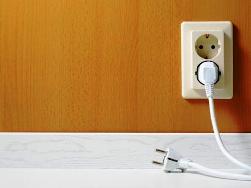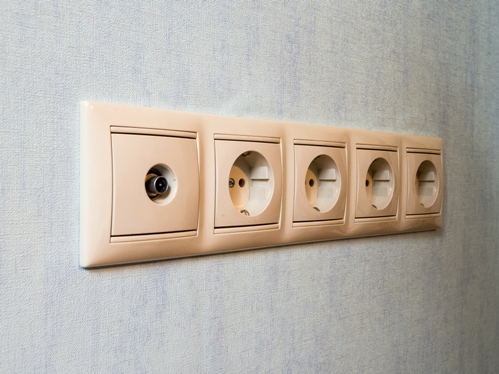Categories: Featured Articles » Electrician at home
Number of views: 339161
Comments on the article: 28
Eight golden rules for repairing apartment wiring
 How to properly repair the apartment wiring.
How to properly repair the apartment wiring.
In our long-suffering country, people do not have enough money to buy new housing. Secondary market of apartments, i.e. Apartments "B.U." becoming more popular. The first thing new settlers do after buying is getting ready for repair. But you need to repair not only the walls, floor, and ceiling, but also the wiring.
The fact is that in the last century, when this housing was built, they counted on the energy consumption of an apartment of 1-2 kW, and now it can easily reach 10 kW. Almost everyone has a washing machine, microwave oven, iron, hair dryer, vacuum cleaner, electric toaster, electric grill, etc. Most of these devices easily consume 1-2 kW, but they can be turned on at the same time! You’ll even have to change electric meter. A modern electric meter is designed for a current of at least 50 A.
But how to get started electrical wiring repair? There are certain rules for this. They will help you save time, money and health.
Rule one
Repair wiring start with the project. Decide which appliances will stand in each room. What kind of lighting will there be, where will sockets and switches. At what height do they need to be installed. Previously, it was customary to install sockets at a height of 80-90 cm, and switches 150-160 cm from the floor.
Now another fashion has come: sockets at a height of 30-40 cm, and switches 80-90 cm. The exception is kitchen outlets, there they are placed at a height of 10 cm from the level of the countertop. Do not save on sockets, it is better to put them at a distance of no more than 3 m from each other.
Second rule
It is necessary to change the wiring during repair immediately and entirely. Firstly, because they used aluminum wires before, and they are short-lived and have a lot of very significant drawbacks. Secondly, when repairing electrical wiring, you can not connect aluminum wires and copper. Thirdly, wiring replacement work related to wall chipping. It is better to make it in an apartment without furniture, because there will be a lot of dirt and inconvenience.
Rule three
Before replacing the wiring, calculate the consumption. Add up the power of electrical appliances that will be powered from one line (one machine). It is accepted that no more than 5 outlets were connected from one machine. The total load power of these outlets should be no more than 5 kW. Wire cross section for outlets 2.5 square. The machine is placed on a current of not more than 25 A. The wire cross section for lighting is at least 1.5 square. The power of lighting devices is not more than 3 kW. The machine is put on a current of no more than 16 A.
Rule Four
Do not save on materials. The cable is better to take VVGNG 3x2.5, VVGNG 3x1.5 or cable VVP 3x2.5. Choose sockets, boxes and switches of the middle price category. The evaluation criterion should be the quality of the contact compounds (better chrome or nickel-plated contacts), thermostable base (better ceramics).
Automata in electrical panel there should be as many separate lines with lights and sockets. For wet rooms it is advisable to use RCD or differential machines. These devices protect people from electrical injuries if they touch bare wires and live parts of equipment.
Rule Five
At the junction of the wiring are electrical boxes (junction boxes). They should be in accessible places, repair work should not block easy access to the boxes. It is better to put the switchboard inside the apartment, then you can choose the number of machines and RCDs yourself and easily expand their number.
Rule Six
It is necessary to competently perform electrical connection. Now in fashion WAGO pads and the like for quick connections.Of course, they speed up the installation, but if you want 100% reliability of connections, it is better to use twisting followed by soldering or welding. The fact is that the pads give point contact and this place can get very hot over time. Twisting and soldering give a contact spot with an area of several square centimeters!
Rule Seven
When repairing electrical wiring, always think about the future. Leave backup machines, sockets, boxes. Everything deteriorates over time and you need to do the work so that the repair or addition of the wiring is as simple as possible, so that later it will not be excruciatingly painful for the time and money spent.
Rule Eight (the most important!)
When working with electrical wiring, you must always follow the safety rules and clearly understand what and why you are doing! If you do not have an electrical education, then do not try to start changing the wiring in the apartment yourself. Be sure to hire specialists!
Any changes in the electrical wiring in the apartment necessarily require the preparation and approval of the project and should only be performed by certified specialists!
P.S. Useful information on this topic:Wiring diagrams in the apartment and house

See also at e.imadeself.com
:
